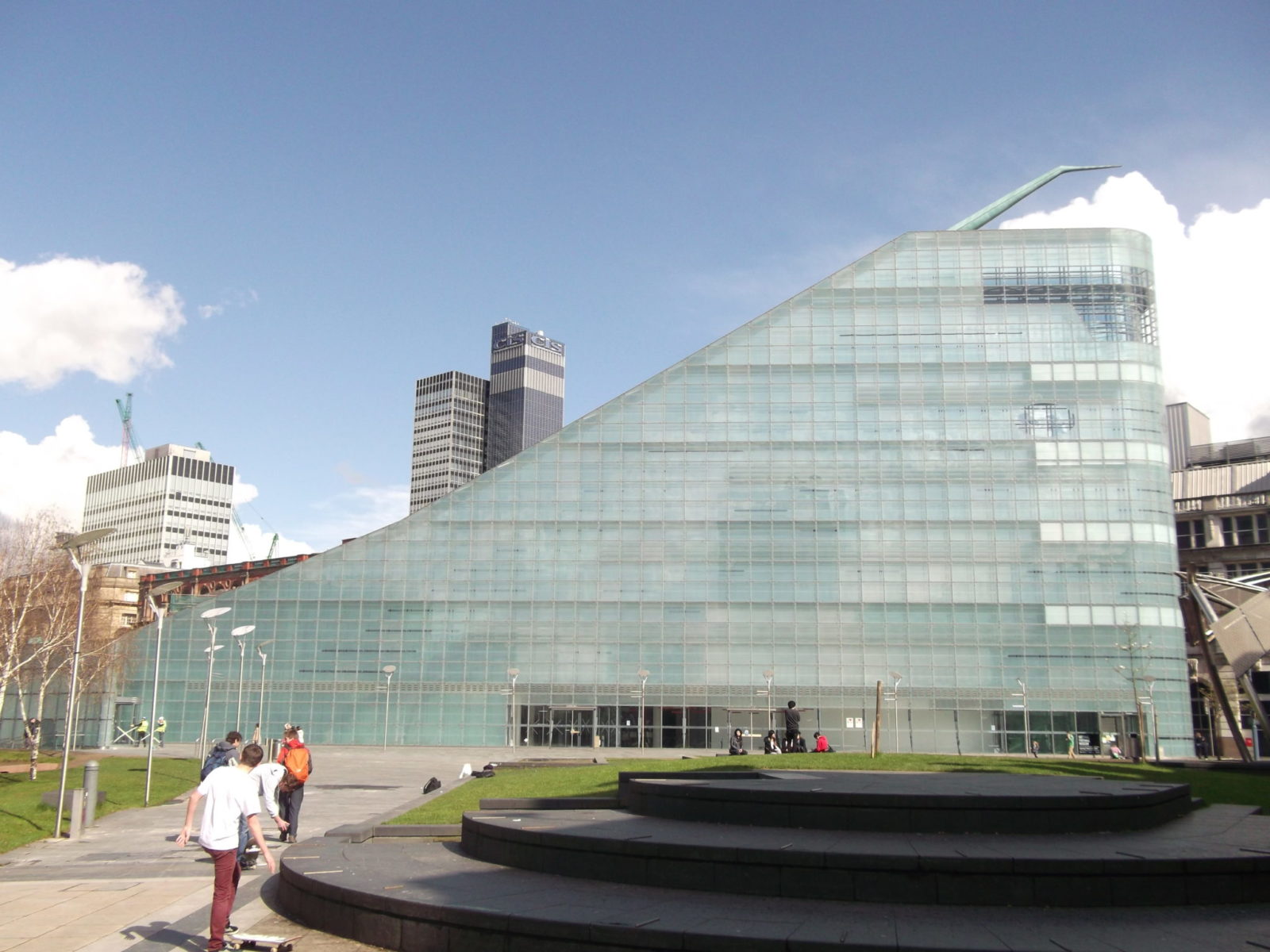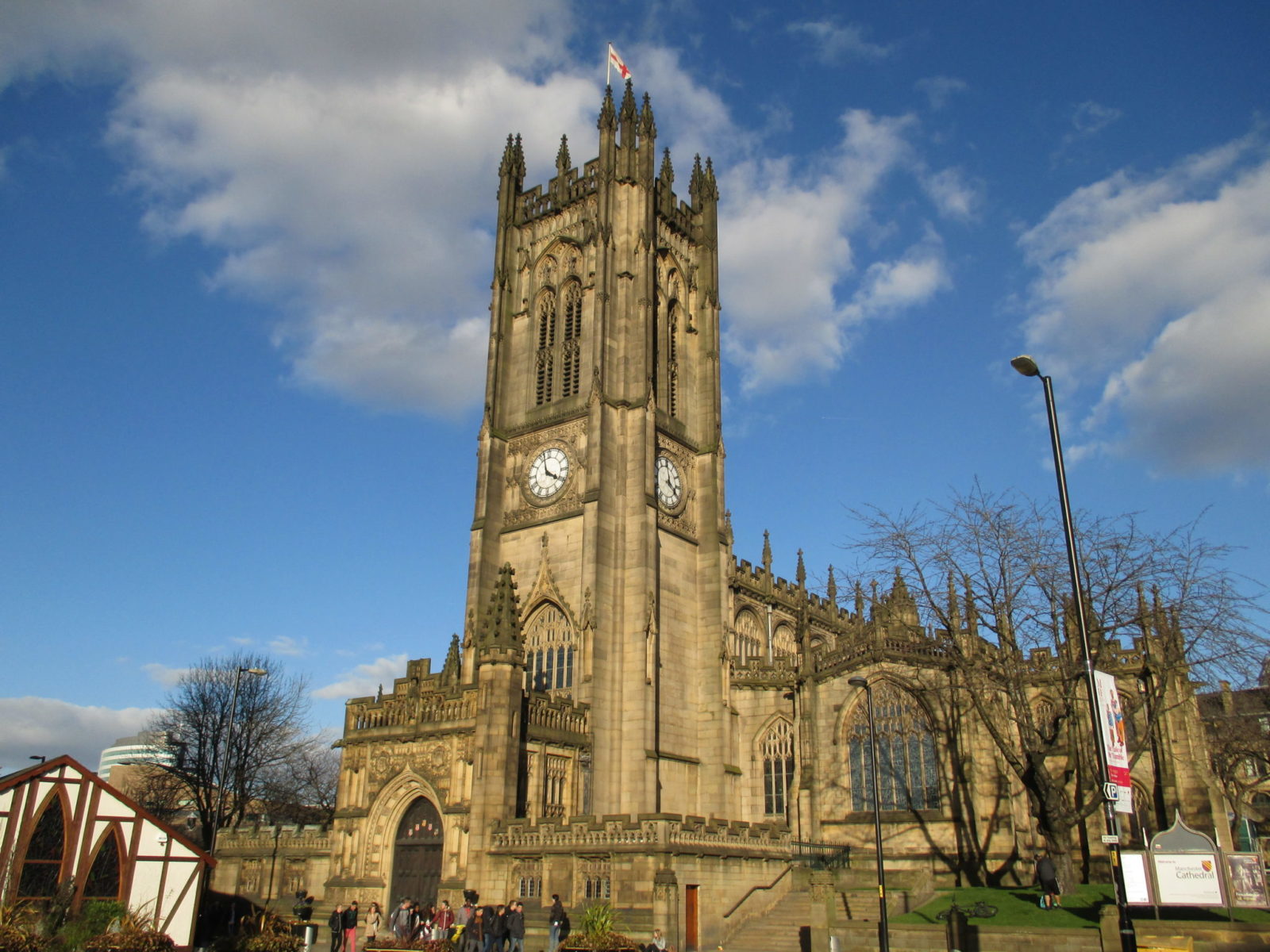Manchester city centre boasts an impressive collection of architecture, with a fascinating mix of historical buildings and modern skyscrapers.
The Manchester skyline has transformed over the years, and although we’ve seen the blossoming of modern 21st Century architecture in the city, there are also some key buildings that retain the citys history and charm so should never be forgotten – you just have to know where to look to find them.
With 64 active cranes in Manchester in September 2018, we’re seeing more new constructions getting the go ahead than ever before, resulting in exciting new buildings and developments popping up around us everywhere.
While we wait to see some of the latest 2019 developments taking shape in Manchester, here are some of the most iconic buildings currently in the city centre, both old and new…
Beetham Tower
Beetham Tower is without a doubt one of the most notable buildings in Manchester. As you journey into the city centre, it’s likely this will be one of the first structures to catch your eye. Until 2018, the iconic 47-storey skyscraper held the title as the city’s tallest building, before work on The South Tower on Owen Street tipped it at a miniscule 0.2m taller than Beetham Tower. Still, at an impressive height of 554 feet, it proudly stands as the second (previously first) tallest skyscraper outside London and is visible from ten English counties.
Not only acknowledged for its height, Beetham Tower also distinguishes itself from other impressive builds due to its innovative design and architecture for which it has received a number of awards for. The tower was designed by Ian Simpson of the Beetham Organisation, and incorporates a unique elongated floor plan with a height to width ration of 10:1, making it one of the thinnest skyscrapers in the world. This is accentuated by a blade structure on the south side which adds to the height and slim design, and also unintentionally attributes to a loud humming or whistling noise during particularly windy days, which can be heard all across the city.
The building is home to the Five Star Manchester Hilton Hotel, with 285 bedrooms occupying the first 23 floors with a well-deserved reputation of the hotel with the best views in all of Manchester. 219 luxury apartments and 16 penthouses are situated above the hotel, separated only by the famed 23rd floor Sky Bar. A visit to the Beetham Tower is a must see for any visit to Manchester, if not to bag a stay in the luxury hotel, at least to admire its incredible architecture.
Urbis
Urbis is another striking design by Ian Simpson that highlights the movement of modern architecture in Manchester, completed in 2002. While the 6 floor tall structure isn’t the tallest building in Manchester, its eye-catching design makes it one of the most aesthetically pleasing builds in the city centre. The £30m fully glazed structure features a unique sloping design, with approximately 2,200 glass panes used on the facades.
For the first decade after build completion, Urbis was occupied by a museum dedicated to the modern city as a symbol of regeneration after the 1996 IRA Manchester bombing, but due to lack of visitors it was taken over as the new permanent home of the National Football Museum in 2012.
Imperial War Museum North
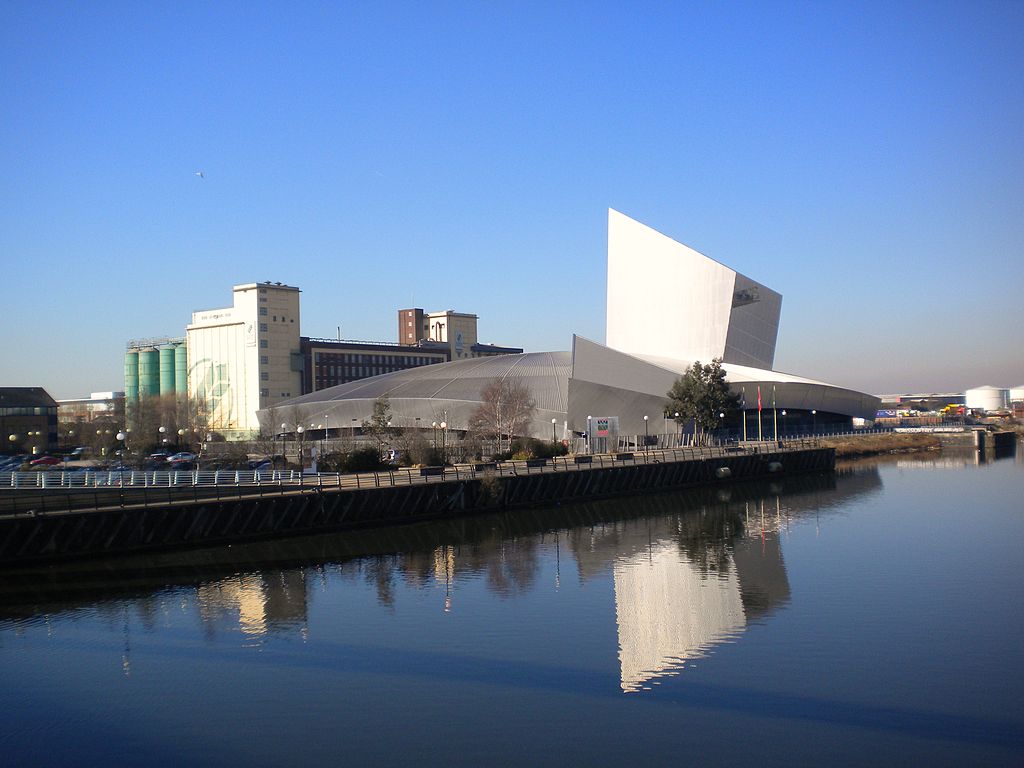
Situated just across the foot bridge from the Lowry is the iconic Imperial War Museum North building which has been gracing Manchester’s skyline since 2002. This fascinating structure was the first UK building designed by internationally acclaimed architect, Daniel Libeskind who was also the talent behind Berlin’s Jewish Museum and the Ground Zero site in New York.
Everything from the structural design to the location was carefully considered when IWM decided to build another museum. Firstly, its Trafford Park location was chosen due to its wartime history, as on this very site stood factories that made munitions, tanks and engines for both the First and Second World Wars. The area was targeted in the Manchester Blitz, causing irreversible damage to the factories and warehouses.
Secondly, though it may not be immediately obvious on a glance, the museums structure actually represents a shattered globe. Libeskind came up with the idea to design the building as a symbol of the effects of war, and so the curved silver shapes represent three pieces of a shattered globe which have been put back together, but will never be the same. The structure is made up of the EarthShard, WaterShard and AirShard to represent three main conflicts – on land, sea and in the air.
This innovative design continues inside the museum itself, where the curves of the shattered globe are a running theme throughout, along with a confusing route in order to make visitors feel disorientated and unsettled, as to replicate the nature of war.
John Rylands Library
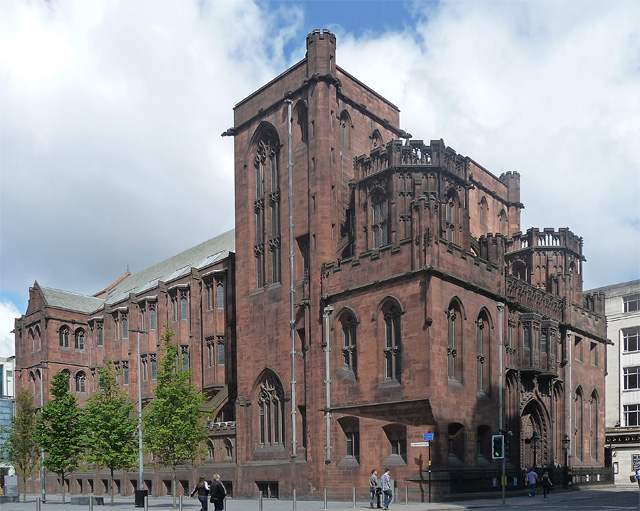 chartrangeadmin | Chartrange | Bulk Earthworks, Remediation & Civil Engineering
chartrangeadmin | Chartrange | Bulk Earthworks, Remediation & Civil Engineering John Rylands Library is a Grade I listed building located in the Deansgate area of Manchester. The library has stood proudly in the city centre since 1900, when it was opened to the public. It is now part of The University of Manchester Library open for readers and visitors.
The design idea behind the late-Victorian neo-Gothic building was to resemble a church, and including elements of Arts and Crafts. The structure was constructed from Cumbrian sandstone built around an internal steel framed structure with brick arched flooring.
The buildings’ interior is a clear indication of why John Rylands Library is one of Manchester’s most visited landmarks. The Gothic details are continued throughout, and the striking design of the main Reading Room is a sight to behold. Lined with wooden bookcases filled with books & manuscripts, and embellished with two large stained glass windows, it really is one of the most stunning libraries in the world – right here in Manchester.
Manchester Town Hall
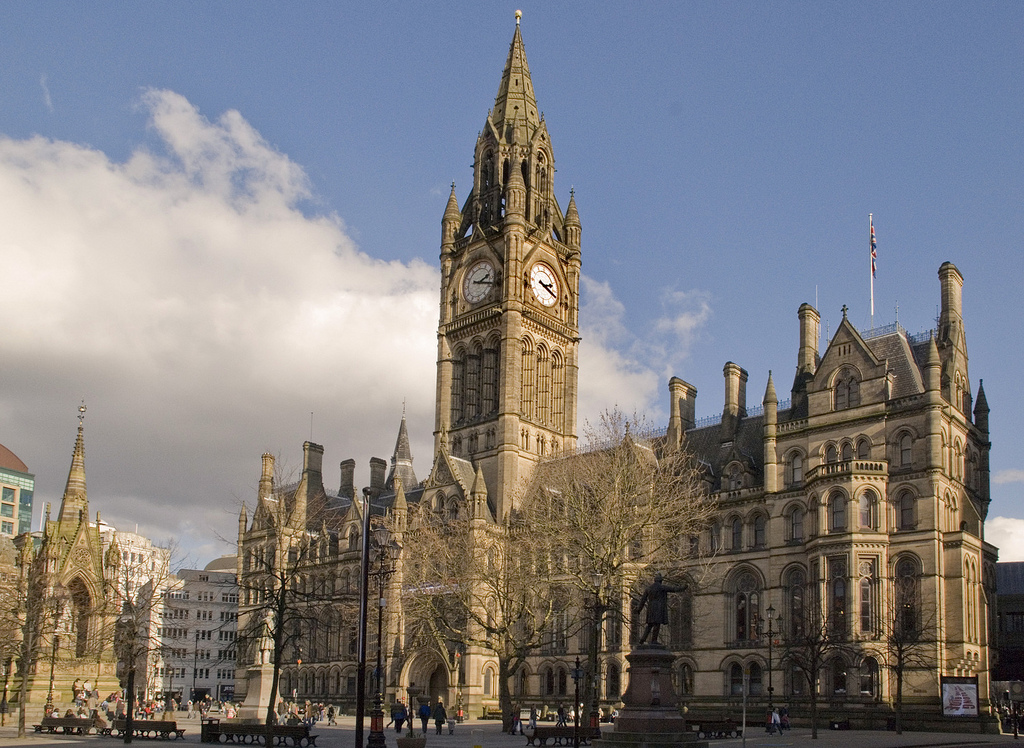 chartrangeadmin | Chartrange | Bulk Earthworks, Remediation & Civil Engineering
chartrangeadmin | Chartrange | Bulk Earthworks, Remediation & Civil Engineering Manchester Town Hall is without doubt one of the most notable iconic landmarks in the city centre. It is a Grade I listed building, meaning it’s one of exceptional interest, with only 2.5% listed buildings in the UK classigied as Grade I. The Victorian Neo-gothic building dates back to 1877, and underwent urgent repair and modernisation in 2014 at an estimated cost of £2.2million. Still, the building retains all of its historic charm and features, and continues to be dominated by the impressive clock tower which houses the Great Abel clock bell and stands at 280 feet.
The structure was designed by architect Alfred Waterhouse and his friend, author Elizabeth Gaskell who opted for a thirteenth century Gothic style, with a fireproof structure using a combination of concrete and wrought-iron beams. The following year, Waterhouse received the Royal Gold Medal for Architecture in recognition of his striking design which remains a hugely popular and important tourist attraction in Manchester.
The Bridgewater Hall
The Bridgewater Hall is one of Manchester’s leading concert venues in the city centre, hosting over 250 performances a year. The venue opened in 1996 and its unusual, modern design stands out as one of Manchester’s most interesting builds.
The structure is mostly made from solid, reinforced concrete with a combination of walls made from deep red sandstone and others clad in aluminium and glass. The auditorium has a double-skinned roof with a stainless steel outer shell. What’s really interesting about the building is that it actually hovers above the ground, sitting on a bed of 280 giant springs to aid the reduction of external noise during concerts.
The auditorium cost around £42 million and holds an impressive capacity of 2,341 people. One of the most extravagant and fascinating features of Bridgewater Hall is the £1.2million pipe organ which resides inside, featuring 5,500 pipes and four manuals. The organ held the title for being the largest instrument to be installed in the UK for a century.
Manchester Cathedral
Originally home to an early Saxon church, Manchester Cathedral is a Grade I listed building on Victoria Street in the city centre, and the mother church of the Diocese of Manchester. The Gothic style structure was extensively remodelled and rebuilt in the Victorian era and 20th century, but still retains its historical character.
In 1864, the clock tower was demolished after being deemed dangerous, and an almost identical but slightly taller one rebuilt by 1868. In 1964, the Cathedral was devastatingly victim to a German bomb which destroyed most of the North East side, destroying all of the Victorian stained glass and two chapels. The cathedral was damaged again when an IRA bomb exploded at the Arndale Centre nearby in 1996. To commemorate the restoration of the cathedral following the blast, a new stained glass window dubbed the Healing Window by Linda Walton was installed in 2004.
The Grade I listed masterpiece remains an important piece of Manchester’s history, and its fascinating architecture attracts hundreds of visitors for obvious reasons. The cathedral now houses medieval quires and ancient historical archives dating back to 1421.
Manchester Construction Boom
Over the years, Manchester has seen a huge influx in new constructions and developments, and it doesn’t look like it’s going to stop any time soon.
The city centre is thriving at the moment, and there are a lot of new exciting buildings and schemes in the pipeline.
Check out our infographic below to see how the city has transformed over the years.


